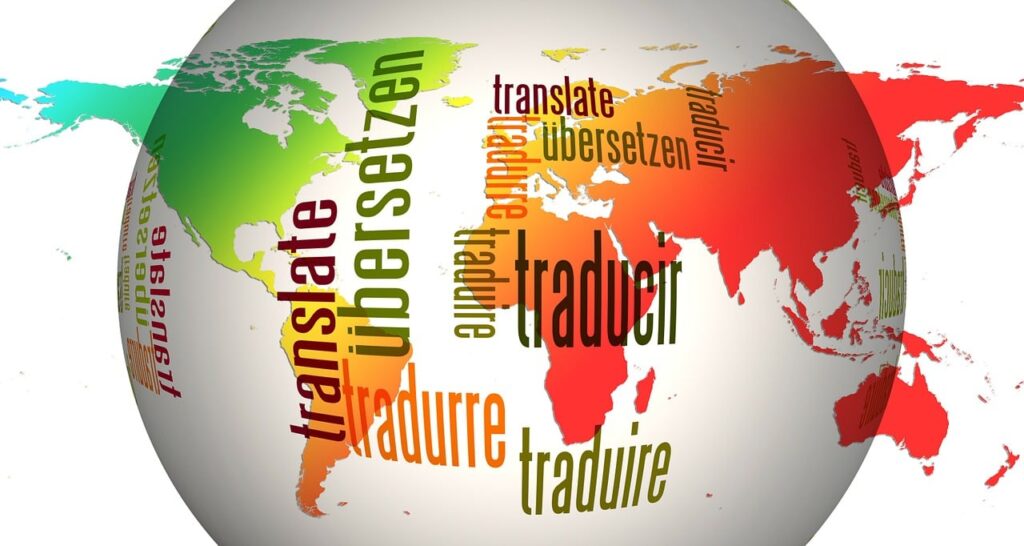
Language is the bridge that connects us in our fast-paced world, and the professionals who facilitate this connection are translators and interpreters. However, many people are not aware of the significant differences between these two vital roles. It’s challenging to determine which one is more complicated, as each of them has its own unique challenges and complexities. In this post, we’ll look into the 9 translator vs. interpreter key differences. Understanding these distinctions will help you identify which service best suits your business needs.
#1 Medium:
The fundamental difference between a translator and an interpreter lies in the medium they work with. Translators primarily deal with written content, such as documents, books, websites, or marketing materials. Their task is to translate text from one language to another while preserving the original message’s meaning and nuances. Interpreters, on the other hand, work with spoken language, providing real-time translation during conversations, meetings, conferences, or events.
#2 Delivery:
Translators have the luxury of time as their advantage. They can carefully review the source text, research terminology, and produce a polished translation before delivering the final product. This approach allows for a high degree of precision and consistency. In contrast, interpreters work in real-time situations where there’s no room for revisions. They must think quickly, adapt to the speaker’s pace, and deliver accurate translations as the conversation unfolds.
#3 Accuracy:
Both translators and interpreters must strive for accuracy, but the nature of their work presents distinct challenges. Translators have the advantage of being able to cross-reference resources, consult dictionaries, and take their time to ensure precision. They can also ask clarifying questions if a text is ambiguous. Interpreters, however, can’t afford these luxuries. They must rely on their knowledge and experience to convey messages accurately, even in high-pressure situations where there’s no room for errors.
#4 Tools:
Translators often use various tools and software to aid their work, including translation memory systems, terminology databases, and proofreading tools. These tools help ensure consistency and efficiency in translation projects. Interpreters rely more on their language skills. While some interpreting assignments may involve the use of interpreting equipment like headsets and microphones for large conferences, the core of their work is dependent on their linguistic prowess.
#5 Time:
Time management plays a crucial role in the daily routines of translators and interpreters. Translators can plan their work according to deadlines and project timelines, allowing them to allocate their time efficiently and revise and refine their translations. Interpreters, on the other hand, must work within the constraints of real-time events. They need to be punctual, adaptable, and ready to provide accurate interpretations without delay.
#6 Context:
Another significant difference is the context in which translators and interpreters operate. Translators typically have more time and resources to delve into the context of a text, ensuring that cultural nuances and references are appropriately conveyed. Interpreters, however, often need to provide immediate and accurate interpretations without extensive background knowledge. This requires a keen ability to quickly grasp the context and adapt to it on the go.
#7 Specialization:
Both translators and interpreters can specialize in various fields, such as legal, medical, technical, or literary translation. However, interpreters often face the challenge of dealing with a broader range of subjects within a single assignment. They may need to switch seamlessly between topics during a conference or meeting, which requires a broad knowledge base and the ability to learn and adapt rapidly.
#8 Physical Presence:
One significant difference is the physical presence of interpreters. Interpreters are often required to be on-site for events, meetings, or conferences where their services are needed. This physical presence ensures real-time communication and immediate response to language needs. In contrast, translators can work remotely and collaborate with clients worldwide without the need for physical proximity.
#9 Memory:
Translators can rely on their extensive reference materials, notes, and research to produce accurate translations. They have the luxury of time to consult dictionaries and review their work. Interpreters, on the other hand, must rely on their memory and retention skills. They need to remember spoken information and convey it accurately, often without the opportunity for reference or revision.
Translators and interpreters are professionals with an essential role, facilitating communication across languages and cultures. Recognizing the key differences between these two roles will help you make informed decisions about which language service best aligns with your specific business needs. Whether you require meticulously translated written content or seamless real-time oral communication, both translators and interpreters play vital roles in fostering global understanding.
 Adriana Nesheva ([email protected]), an English to Bulgarian translator for beauty and fashion brands.
Adriana Nesheva ([email protected]), an English to Bulgarian translator for beauty and fashion brands.
